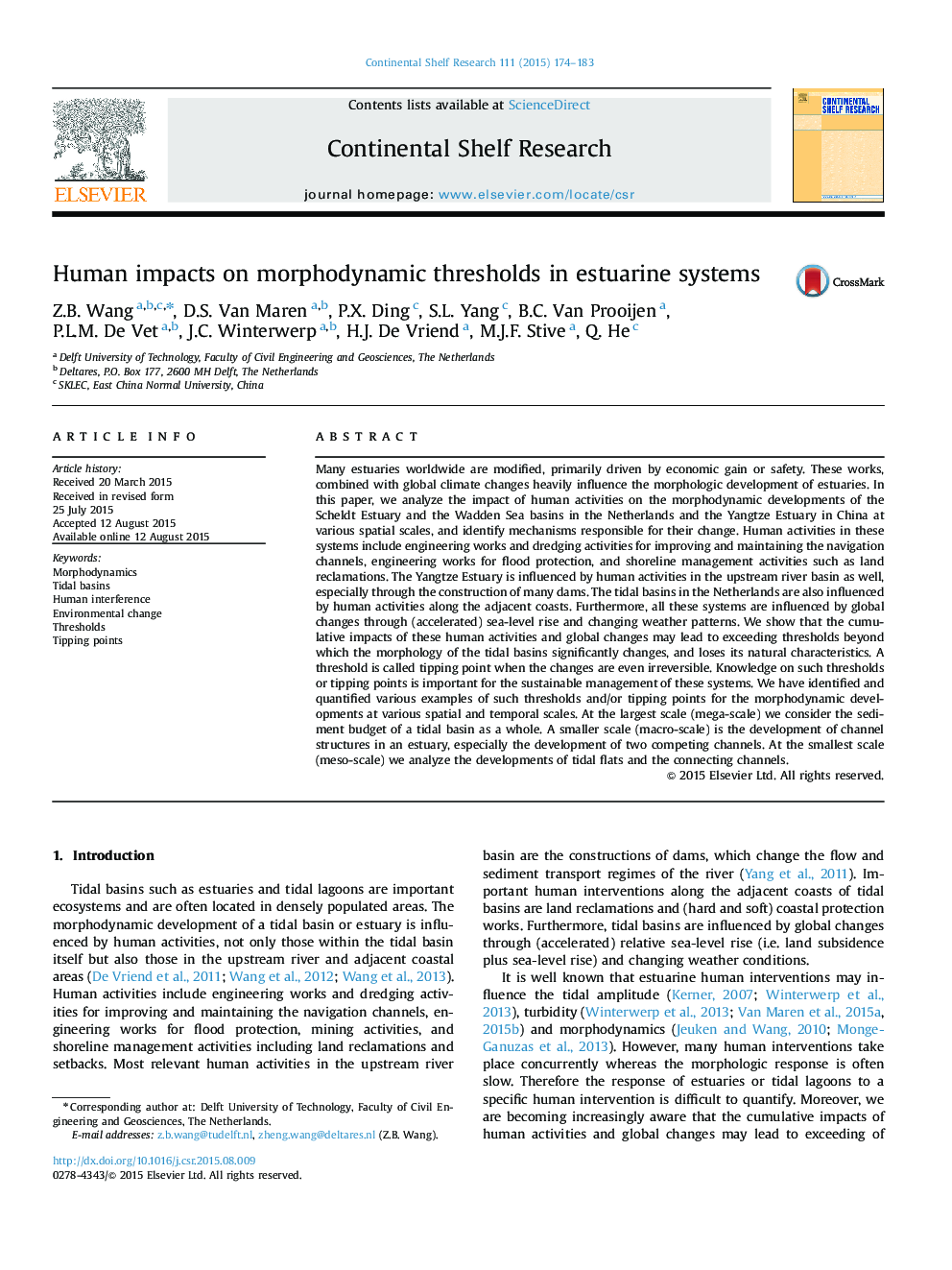| Article ID | Journal | Published Year | Pages | File Type |
|---|---|---|---|---|
| 6383002 | Continental Shelf Research | 2015 | 10 Pages |
â¢Estuaries and tidal lagoons are influenced by human activities and global changes.â¢Human activities and global changes may exceed thresholds for irreversible changes.â¢Thresholds for morphological changes at various scales are identified and estimated.â¢Various estuaries and tidal lagoons in China and The Netherlands are considered.â¢The identified thresholds are important for sustainable management of the tidal basins.
Many estuaries worldwide are modified, primarily driven by economic gain or safety. These works, combined with global climate changes heavily influence the morphologic development of estuaries. In this paper, we analyze the impact of human activities on the morphodynamic developments of the Scheldt Estuary and the Wadden Sea basins in the Netherlands and the Yangtze Estuary in China at various spatial scales, and identify mechanisms responsible for their change. Human activities in these systems include engineering works and dredging activities for improving and maintaining the navigation channels, engineering works for flood protection, and shoreline management activities such as land reclamations. The Yangtze Estuary is influenced by human activities in the upstream river basin as well, especially through the construction of many dams. The tidal basins in the Netherlands are also influenced by human activities along the adjacent coasts. Furthermore, all these systems are influenced by global changes through (accelerated) sea-level rise and changing weather patterns. We show that the cumulative impacts of these human activities and global changes may lead to exceeding thresholds beyond which the morphology of the tidal basins significantly changes, and loses its natural characteristics. A threshold is called tipping point when the changes are even irreversible. Knowledge on such thresholds or tipping points is important for the sustainable management of these systems. We have identified and quantified various examples of such thresholds and/or tipping points for the morphodynamic developments at various spatial and temporal scales. At the largest scale (mega-scale) we consider the sediment budget of a tidal basin as a whole. A smaller scale (macro-scale) is the development of channel structures in an estuary, especially the development of two competing channels. At the smallest scale (meso-scale) we analyze the developments of tidal flats and the connecting channels.
Graphical abstractDownload full-size image
